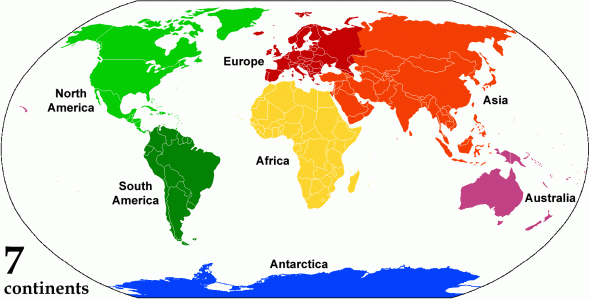Title
Weird Science: Continent Confusion
NGSS Science and Engineering Practices
Image caption
SF Fig. 1.2. This map series shows some of the disagreements over the number of continents. All the land that is one color is considered one continent. It shows the earth’s landmasses divided into five, six and seven continents. Image is animated.
Image copyright and source
Continents can be just as difficult to define as ocean basins (see SF Fig. 1.2). Continents can be defined based on plate tectonics, political boundaries, or historical custom. Geographers may point to political and historical differences and designate Europe and Asia as separate continents, whereas a geologist may note the lack of a water boundary between the two continents, take into account that both Europe and Asia are on the same tectonic plate, and designate them as one continent—Eurasia. Most students in the United States learn that North America and South America are different continents, whereas most European and Latin American students are taught that they are one American continent.








